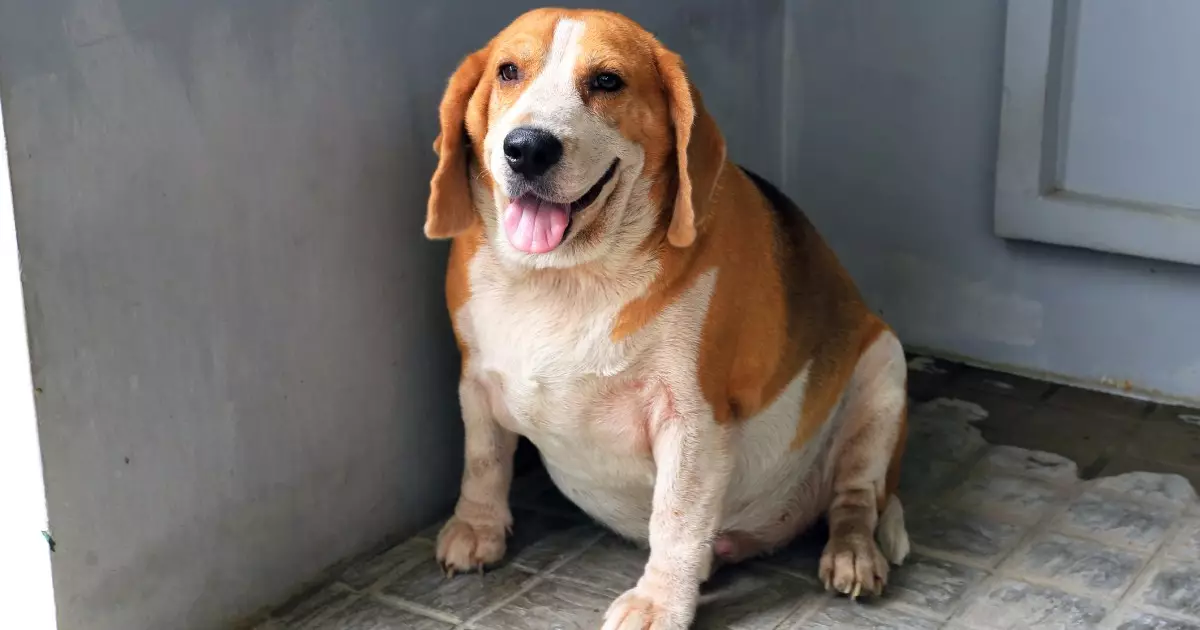As more pet owners become aware of the serious health implications associated with pet obesity, the question of how to maintain a healthy weight in our canine companions has never been more pressing. Just as excessive weight can lead to a host of health problems in humans, overweight dogs face their own set of challenges, including diabetes, osteoarthritis, and heart disease. If you suspect your dog is overweight, this guide will help you navigate the essential changes needed for your pet’s health and well-being.
Understanding how to determine if your dog is indeed overweight is the first step toward tackling the issue. Look at your dog from above; you should be able to see a clear waistline indentation, resembling an hourglass shape. If your dog’s body appears more like a block or lacks a defined shape, it’s a sign that they need to shed some pounds. Additionally, running your hands along your dog’s sides should allow you to feel their ribs without excessive pressure. If you can’t easily detect their ribs, it’s likely your dog is carrying extra weight that needs to be addressed.
Before kicking off any diet or exercise regimen, consult your veterinarian. A check-up will help identify any underlying health issues contributing to your dog’s weight gain, such as hormonal imbalances like hypothyroidism. Your vet will also conduct a weigh-in to establish a baseline for your dog’s weight loss journey. They can provide a recommended target weight and may suggest a specialized diet, although transitioning to a “diet food” isn’t the only option. Sometimes it’s simply about adjusting the quantity of food your dog consumes.
To achieve weight loss, calorie reduction is fundamental. A good starting point is to cut your dog’s regular food intake by one-third to one-half. Accompany this decrease with low-calorie, high-fiber foods to help keep your pet feeling full. Consider adding fresh steamed green beans, plain canned pumpkin, or low-sodium canned vegetables to their diet. These alternatives not only provide volume but also enhance nutritional variety, ensuring your pup receives essential nutrients while still losing weight.
Adjusting Feeding Habits
Creating a structured feeding routine can make a world of difference for your dog’s dieting success. Portion out your dog’s food and feed them twice a day, preferably at the same times each day. Avoid free-feeding or leaving food out for them to snack on. This structure encourages discipline and helps your dog understand that mealtime is a set event. Moreover, incorporating commands such as asking them to sit patiently while you prepare their meal reinforces good behavior and makes feeding a more eventful moment for your pet.
Smart Snacking and Engaging Eating Strategies
Snacks can be a joy for dogs, but managing how and when to dispense treats is vital. Only offer treats when your dog has shown good behavior or completed a command successfully—this will make the reward feel earned. Transform meal times into engaging activities by utilizing food-dispensing toys like Kongs or puzzle feeders; this turns eating into a stimulating challenge, forcing your dog to work for their meal while mentally engaging them.
Maintaining Long-term Healthy Habits
Once your dog reaches their target weight, it’s crucial to maintain that healthy lifestyle. Continuously monitor their food intake, adjusting it according to their age, activity level, and metabolism. Be aware that the feeding guidelines found on pet food packaging are merely starting points. Each dog is unique, and their requirements can vary based on numerous factors.
Moreover, integrating regular exercise into your dog’s routine is essential. Daily walks, play sessions, and even structured activities like obedience training can make significant contributions to maintaining a healthy weight.
Changing your dog’s eating habits and lifestyle can indeed be a challenge, but the rewards are well worth the effort. Not only will you help promote a longer and healthier life for your furry friend, but you’ll also share countless more meals, playtimes, and adventures together. With vigilance, patience, and a commitment to their diets, transforming an overweight dog into a healthy, active companion can be a fulfilling journey for both you and your beloved pet.

